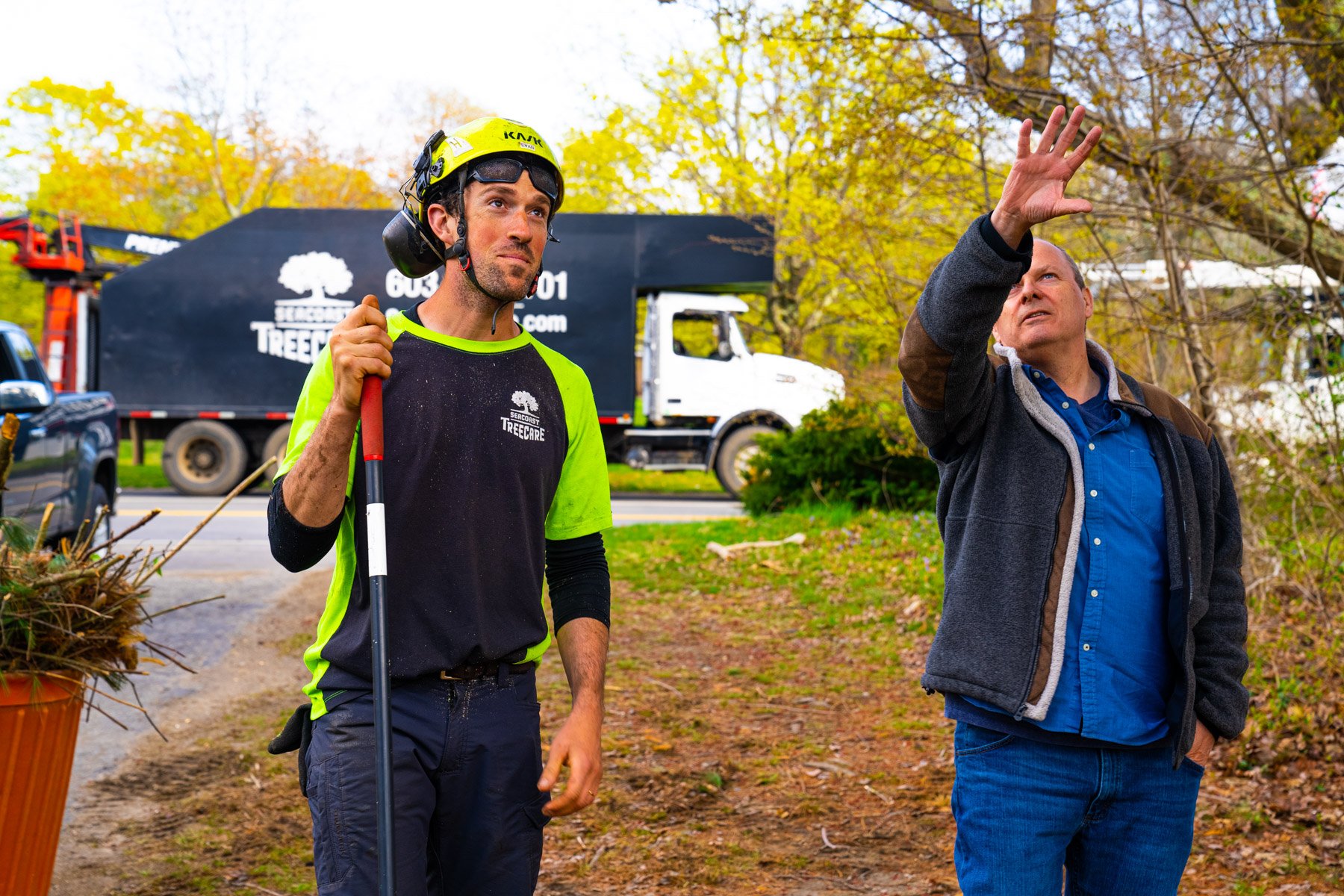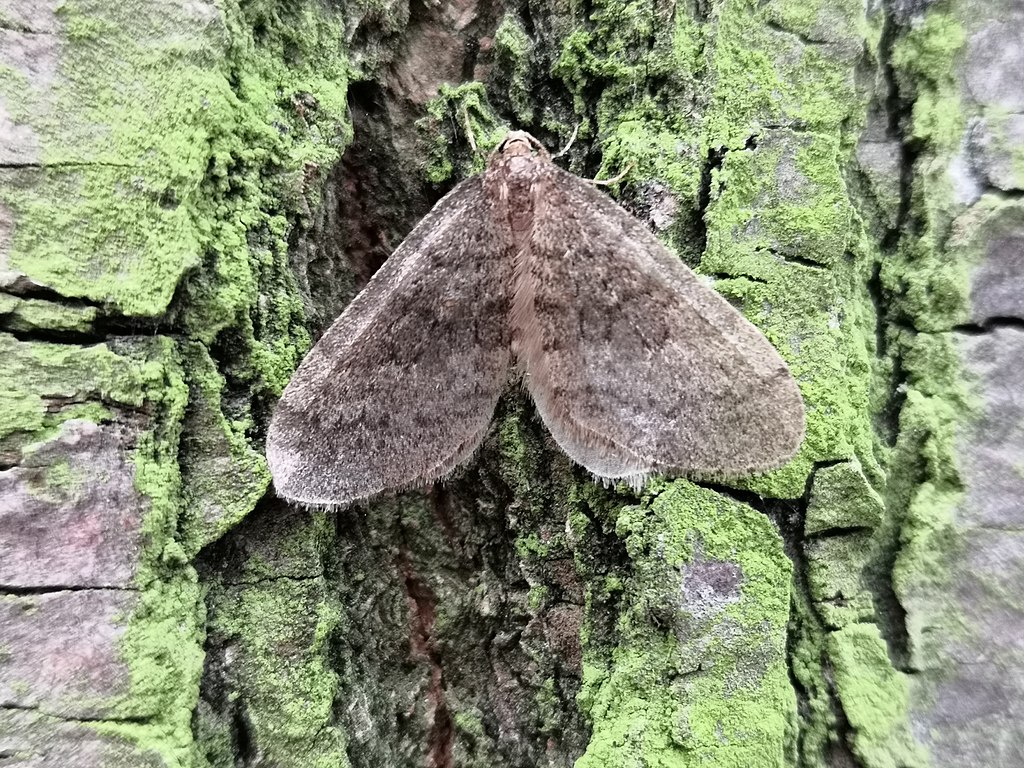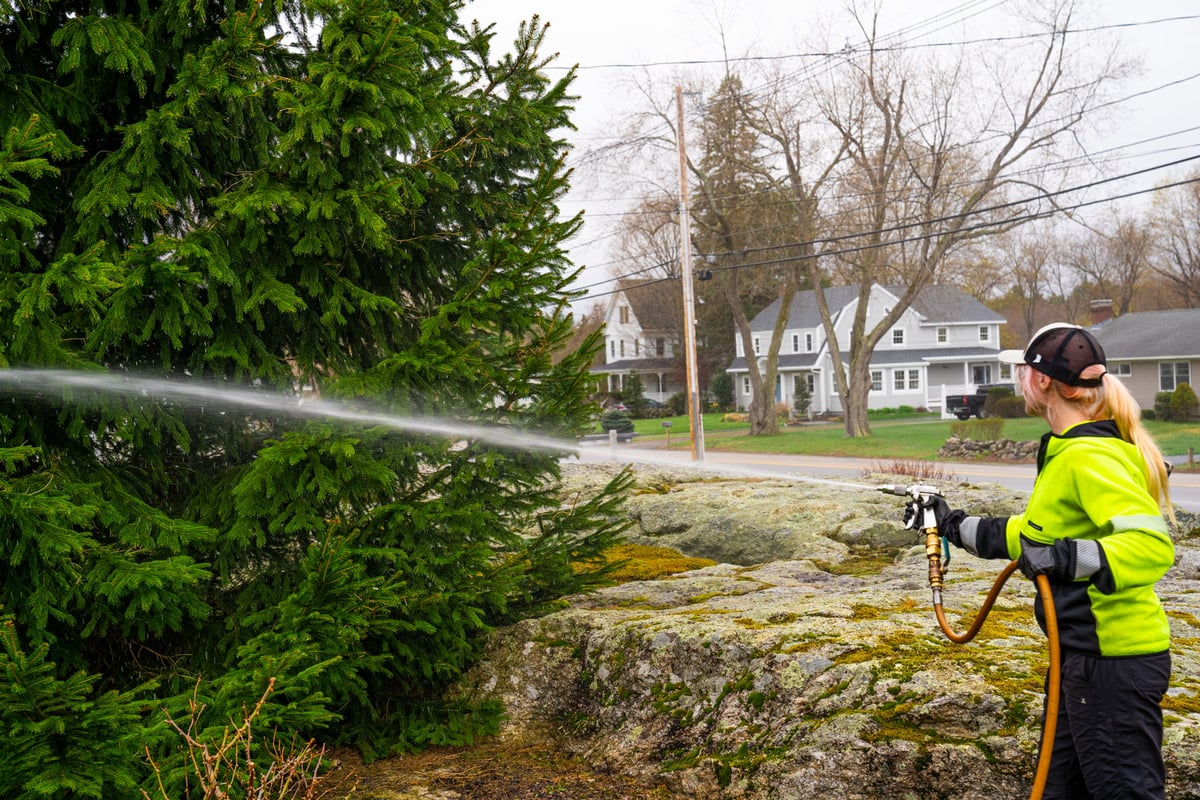
How to Protect Your Trees From Winter Moth Damage: Tips for New England Homeowners
Ever since it first showed up in the early 2000s, the winter moth in New England has been an ongoing problem in our area.
This invasive insect can wreak havoc on our beloved trees. These pests leave holes in the leaves of deciduous trees and shrubs, eventually leading to defoliation or even dieback. If an infestation is bad enough, the winter moth can eventually kill a tree.
This hungry pest is not picky and will devour almost all broadleaf plants including your Maples, Oaks, Ashes, Apples, and more.
Understanding this pest and how to deal with it is important to prevent serious damage.
This invasive insect can wreak havoc on our beloved trees. These pests leave holes in the leaves of deciduous trees and shrubs, eventually leading to defoliation or even dieback. If an infestation is bad enough, the winter moth can eventually kill a tree.
This hungry pest is not picky and will devour almost all broadleaf plants including your Maples, Oaks, Ashes, Apples, and more.
Understanding this pest and how to deal with it is important to prevent serious damage.
The Winter Moth Life Cycle
Adult winter moths typically emerge in November or December to mate.
The female winter moth lays a cluster of nearly 150 eggs under tree bark or twigs, where they spend the rest of the winter.
The female winter moth lays a cluster of nearly 150 eggs under tree bark or twigs, where they spend the rest of the winter.

In the spring, the eggs hatch into pale green caterpillars and start feeding on your landscape foliage. During this time, caterpillars will also spin a strand of silk, which disperses them into tree canopies through the air currents.
Winter moth damage occurs when these caterpillars work their way into the tree buds and leaves to feed.
These voracious caterpillars continue to migrate from bud to bud, devouring as much as they can. When feeding ends in mid-June, the caterpillars fall to the ground to pupate and emerge as moths.
Winter Moth Treatment
Because this pest has the potential to destroy your trees and shrubs, it’s important to deal with it swiftly. The best course of action is going to depend on what stage of life these pests are in. Factors such as the size of the tree and its proximity to a home are also considerations when determining the best winter moth treatment.
A non-chemical option for dealing with the winter moth in New England is tree banding. This involves placing a sticky band around the trunk of the tree in early to mid-November. This will prevent female moths from crawling up the tree to lay eggs.
A non-chemical option for dealing with the winter moth in New England is tree banding. This involves placing a sticky band around the trunk of the tree in early to mid-November. This will prevent female moths from crawling up the tree to lay eggs.

Dormant horticultural oil can also be used from November to January for effective winter moth prevention.
But sometimes winter moth spraying is the best course of action. Insecticides can be used to treat newly hatched caterpillars or actively-feeding caterpillars (again, the product will depend on what stage the pest is in).
Winter Moth Prevention
Because these pests are so destructive, a proactive approach is always wise. We definitely recommend treatments that prevent these pests from hatching in the first place.
As with any pest, diligence is important. You always want to try and catch a problem as early as possible so that you can deal with it in its early stages. This is a key reason why having a horticultural expert on your property can make a huge difference.
Having your trees or shrubs evaluated for signs of trouble can really pay off with proactive and swift treatments that address a problem early on. After all, the winter moth is just one of many potential pests (or diseases) that could be destroying your trees or shrubs.
Having your trees or shrubs evaluated for signs of trouble can really pay off with proactive and swift treatments that address a problem early on. After all, the winter moth is just one of many potential pests (or diseases) that could be destroying your trees or shrubs.
Tree Services in Southern NH, ME, and MA
Because the trees and shrubs in your New England landscape are subject to a number of different problems, it’s worth partnering with a tree care professional who can help provide expert advice and solutions.
At Seacoast Tree Care in Southern NH, ME, and MA, we work with a team of highly skilled Certified Arborists who can not only perform thorough inspections (to identify problems) but will also help guide you toward the best decisions toward hopefully saving your trees from invasive species like the winter moth.
When you make wise decisions for your trees and shrubs, you protect your investment in your New England landscape.
Ready for healthier trees at your Southern NH, ME, or MA home? Request your consultation and have your New England trees evaluated. By making a wise choice, you’ll know your trees are in good hands.
At Seacoast Tree Care in Southern NH, ME, and MA, we work with a team of highly skilled Certified Arborists who can not only perform thorough inspections (to identify problems) but will also help guide you toward the best decisions toward hopefully saving your trees from invasive species like the winter moth.
When you make wise decisions for your trees and shrubs, you protect your investment in your New England landscape.
Ready for healthier trees at your Southern NH, ME, or MA home? Request your consultation and have your New England trees evaluated. By making a wise choice, you’ll know your trees are in good hands.
Image Source: winter moth



